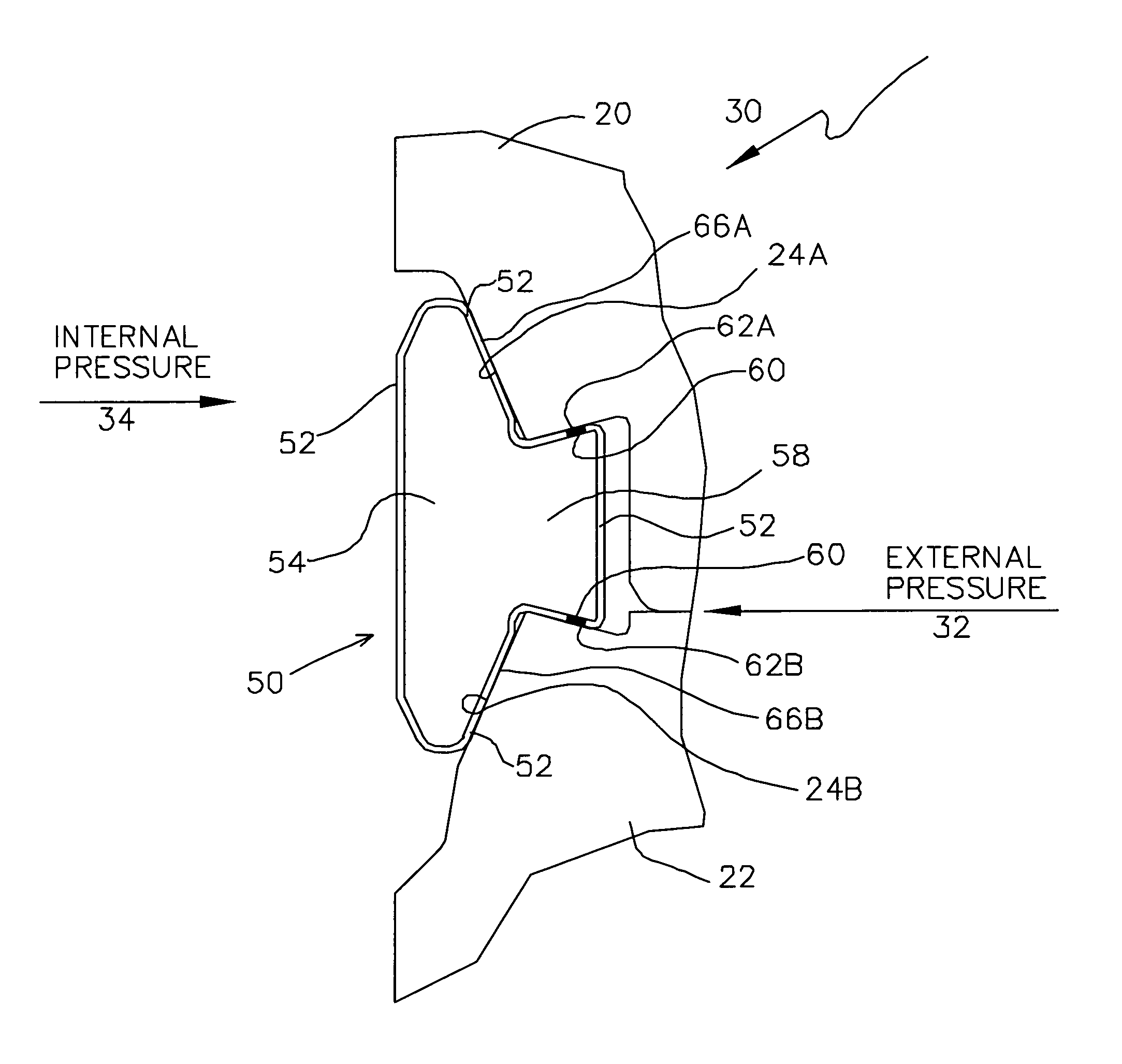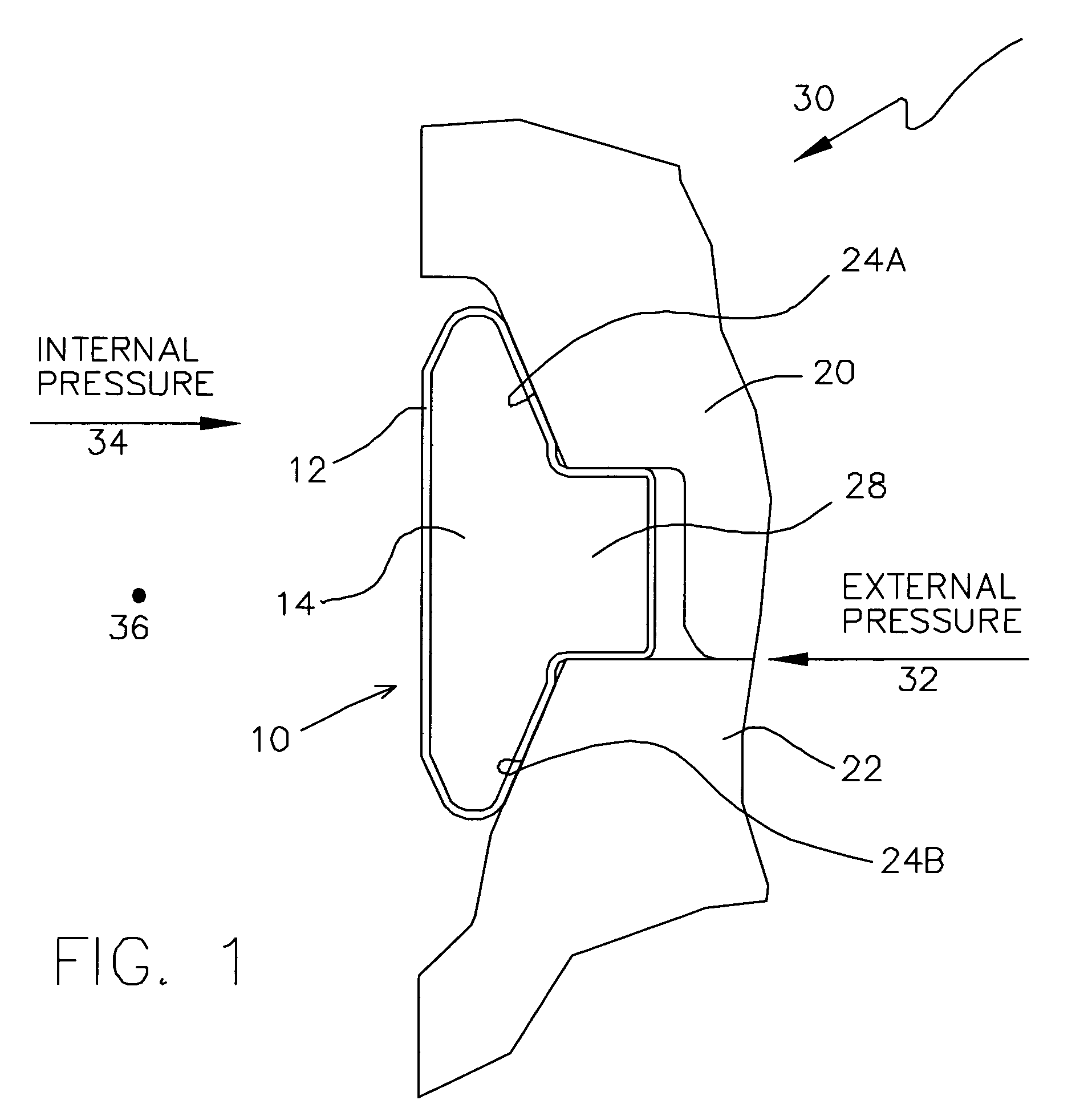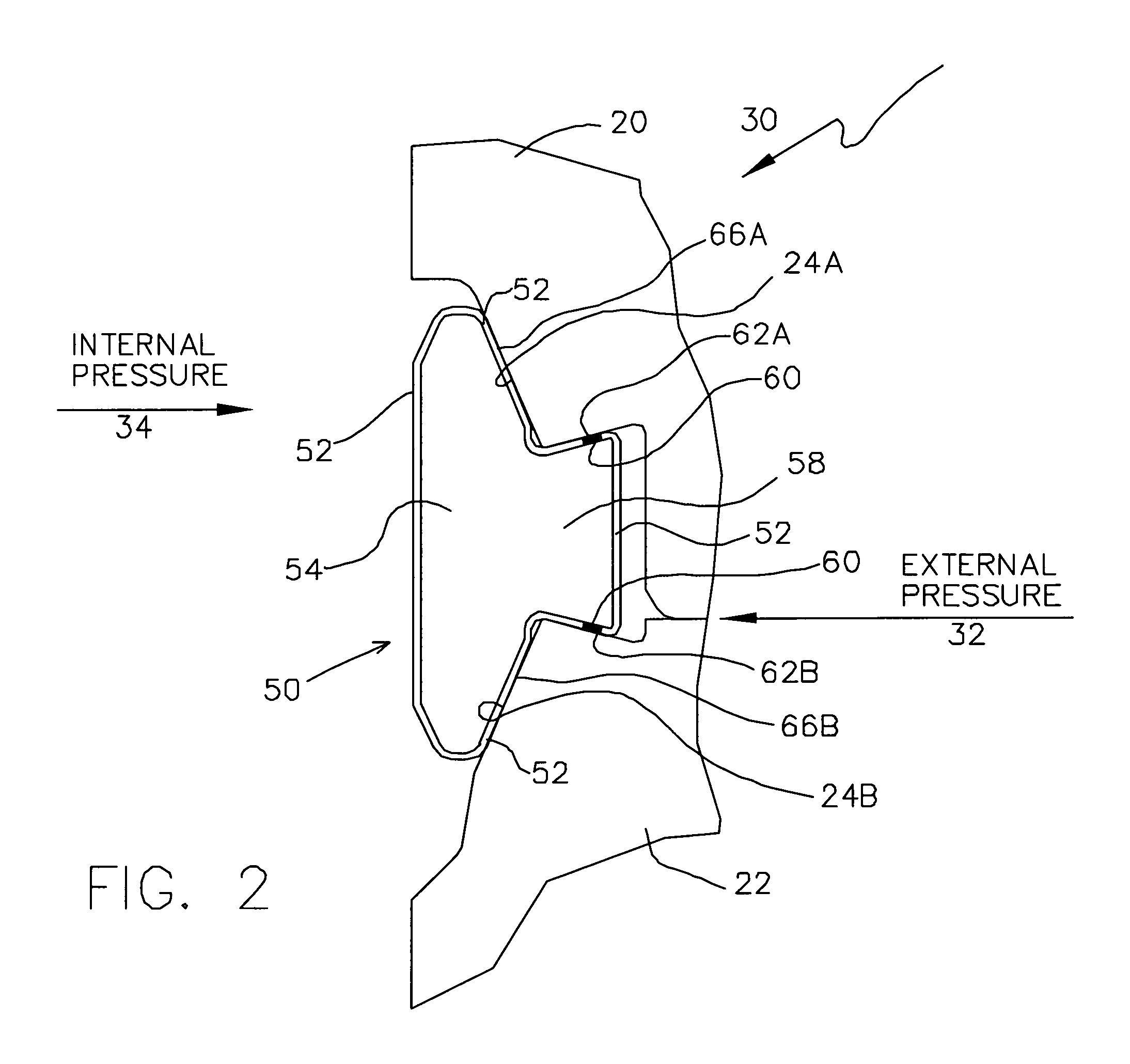Fishtail bore seal
a technology of bore seals and fishtails, applied in the direction of borehole/well accessories, cable terminations, hose connections, etc., can solve the problems of low carbon steels that have limited resistance to extremely corrosive wells, exceed seal yield, and permanent compressive strain, etc., to resist aggressive corrosive conditions and higher temperatures, and resist external pressure
- Summary
- Abstract
- Description
- Claims
- Application Information
AI Technical Summary
Benefits of technology
Problems solved by technology
Method used
Image
Examples
Embodiment Construction
[0038]The preferred embodiment of the invention is a bore seal which alleviates one or more of the deficiencies described in the prior art and incorporates one or more of the objects previously identified. The bore seal of the present invention is a compression ring disposed and compressed between the opposing ends of the oil and gas well tubular members to be joined. The bore seal of the preferred embodiment has an internal diameter / shape arranged and designed to match the bores of tubular members and equipment to be joined and sealed, including commercially available profiles, such as AX, CX, DX, LX, NX, VX, etc. The ring is about four inches long (measured in its axial direction) and is machined externally to provide two conical faces tapering towards each end at about a twenty-three degree angle to the axis. The ends of the connecting components are machined to open outwardly in order to provide tapering conical seats for the ring at the same angle but with a slightly smaller di...
PUM
| Property | Measurement | Unit |
|---|---|---|
| yield strength | aaaaa | aaaaa |
| temperatures | aaaaa | aaaaa |
| bore pressures | aaaaa | aaaaa |
Abstract
Description
Claims
Application Information
 Login to View More
Login to View More - R&D
- Intellectual Property
- Life Sciences
- Materials
- Tech Scout
- Unparalleled Data Quality
- Higher Quality Content
- 60% Fewer Hallucinations
Browse by: Latest US Patents, China's latest patents, Technical Efficacy Thesaurus, Application Domain, Technology Topic, Popular Technical Reports.
© 2025 PatSnap. All rights reserved.Legal|Privacy policy|Modern Slavery Act Transparency Statement|Sitemap|About US| Contact US: help@patsnap.com



